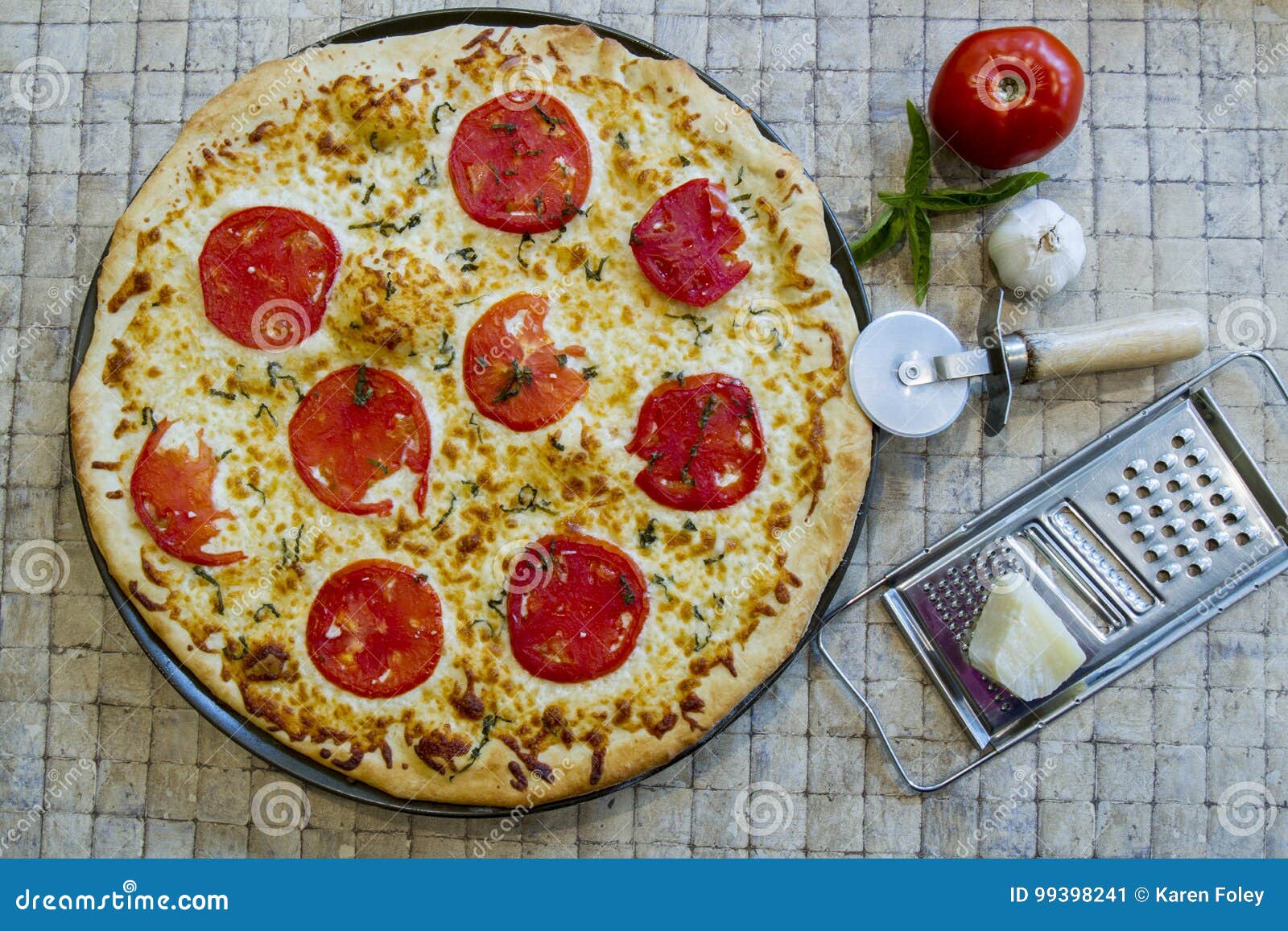

Again you could use the back of a baking sheet/cookie sheet if you don’t have a peel. It helps a lot when you’re trying to get that dough onto a hot pizza stone. I also recommend a pizza peel to get the pizza on and off the stone. Or you can try heating up a baking sheet really hot before you put the dough on it. (We have the pampered chef one and love it.) If you don’t have one, you can find one here. We did cook ours on a pizza stone which I’d say is important to have to get that crust really bubbly and chewy. Basically you’re just making dough, then letting it rise, then refrigerating it to let it proof for a while.

There are a lot of details in the crust recipe, but don’t be intimidated. The crust is bubbly and light, and it’s crispy on the edges but chewy inside.

This Italian margherita pizza is amazing. You really need to let the dough rest and proof for a long time for the yeast to start breaking down some of the gluten. I should also say that before this class, I’d made pizza almost every weekend for years for our family – I definitely wasn’t a new pizza maker – BUT I still had so much to learn! The way they make the dough, proof it, and treat it tastes SO MUCH BETTER than a typical pizza dough I’d always made. The recipes take a little time but are delicious (they’re not tough recipes, just take a lot of time to proof). My husband has been making some amazing breads recently from this cookbook and it’s the best.

My husband and I whipped out our Flour Water Salt Yeast cookbook and used the techniques I’d learned, along with Ken Forkish’s awesome pizza dough method and recipe to create this delicious Italian margherita pizza. When I got home I was excited to use the techniques he’d taught us about handling the dough, shaping it, and really letting it proof to get that bubbly crust. Hopefully this will help you when you go to make this Italian Margherita Pizza. Crazy to learn this! So… our instructor advised us to find the most natural kind of flour we could when making pizza (or pasta) at home. A girl in our class confirmed this happened to her friend on their trip – she was allergic to gluten but came to Italy and ate all the pizza and pasta and felt great. Also, the dough proofs for several days in most Italian margherita pizza, so the yeast breaks down a lot of the gluten. One interesting fact he told us was that most people that have a gluten allergy in the US can eat any type of pizza, pasta, or bread in Italy – the flours and grains are a lot less processed so apparently they don’t cause allergic reactions.
#Ingredient margarita pizza how to
I loved learning from a chef in Florence how to make Italian Margherita Pizza. He talked to us about treating our ingredients with care and also about choosing really high quality items for our recipes. He also had a great eye for measurements without actually measuring things. The way he formed the pizza dough and worked with the dough was artful. The Italian chef teaching us was amazing – he had such a good feel the food he was working with. The class was held at FlorenceTown cooking school – a large kitchen with several cooking stations and lots of equipment. I found a pizza and gelato class and signed up. When I went to Italy, one of my top priorities was to take a cooking class.


 0 kommentar(er)
0 kommentar(er)
